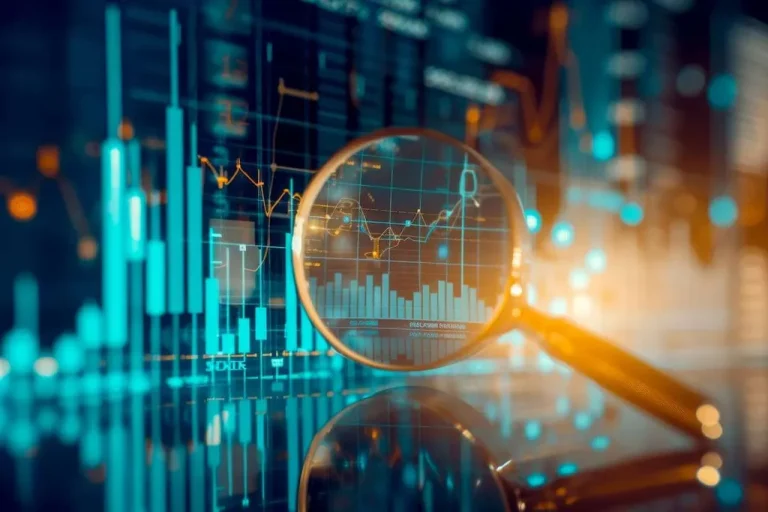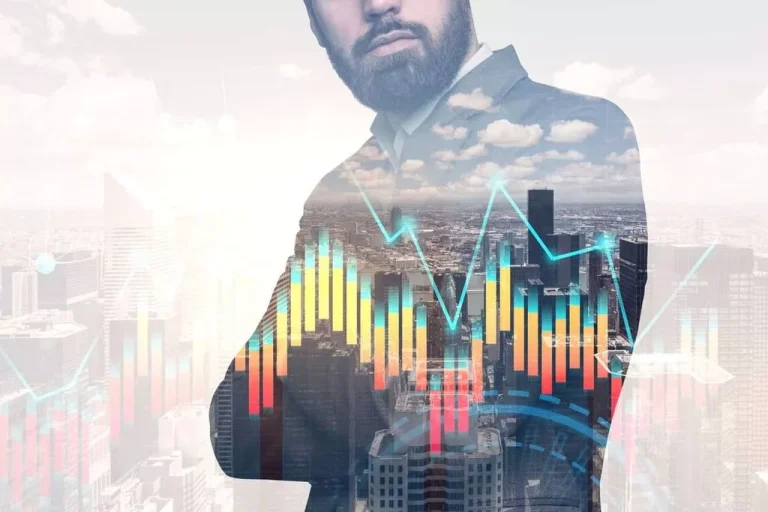Content
Kavout’s “K Score” is a product of its intelligence platform that processes massive diverse sets of data and runs a variety of predictive models to come up with stock-ranking ratings. With the help of AI, the company recommends daily top stocks using pattern recognition technology and a price forecasting engine. Benchmarking is the practice of evaluating an investment strategy by comparing it to a stock market AML Risk Assessments benchmark or index. AI tools can help compare investment strategies to those of other investors or benchmarks in a specific sector or industry. Investors can then contextualize their financial standing and decide whether they need to improve their strategy. AI trading offers significant benefits such as reducing research time, enhancing accuracy, predicting market patterns, and lowering overhead costs.
Artificial Intelligence Industry in the US [Deep Analysis]
AI algorithms can quickly analyze multiple indicators, market factors, and historical data to generate precise trade signals. This improves the accuracy of trade entry and exit points, potentially leading to more successful trades and improved overall trading performance. AI trading works by analyzing big amounts of data and identifying patterns and trends that are used to predict future market ai trading system movements. AI algorithms will become even more complex as technology develops, enabling them to analyse all forms of unstructured data. The trading experience will most likely also be improved by AI-powered chatbots and virtual assistants, which could offer individual traders real-time assistance and customised advice. Customer satisfaction remains at an all-time high thanks to the integration of AI-enabled trading in customer support services.
What to Look Out for When Using AI to Trade Stocks
On the other hand, https://www.xcritical.com/ AI and machine learning systems could themselves create risk and market volatility, instead of mitigating it. Although they provide clear benefits such as market liquidity, these algorithms may be less discernible, creating even more unpredictable changes within markets. AI-driven trading systems can sometimes be overly optimised, meaning they perform well on historical data but may not perform as well in real-time trading. This is because these systems may be tailored specifically to analyse past market conditions, they function as a ‘lagging system’, which makes them less adaptable to new and unforeseen situations. AI can also improve security and market integrity by observing trading trends and spotting suspect behaviour in real time, assisting in the detection and mitigation of fraudulent activity. Furthermore, emotional decision-making, fatigue, and cognitive biases can all lead to poor trading decisions.
OpenAI API Integration: How to do, OpenAI Models, Pricing
The global AI trading market was valued at $18.2 billion in 2023, and it could nearly triple in size by 2033. If you’re interested in using AI and machine learning for investment research, you can create a free account here. Machine learning can also be used to analyze publicly available blockchain data, otherwise known as on-chain analysis. Additionally, it is important to note that the quality of the data used is just as important as the quantity of data. Therefore, it is crucial to ensure that the data is accurate, reliable and up-to-date, as this will increase the overall effectiveness of the AI system in the financial sector. Predictive analytics uses statistical algorithms and ML techniques to calculate how likely future outcomes are.
AI enables the firm to spot market inefficiencies and subtle patterns across large datasets that human traders cannot, making it a formidable player in algorithmic trading. One of the most successful examples of algorithmic trading powered by AI is Renaissance Technologies, a hedge fund known for its Medallion Fund. The firm relies heavily on quantitative models and machine learning algorithms to process vast amounts of data and predict price movements. Renaissance’s algorithmic trading strategies have consistently delivered outstanding returns, far outperforming the broader market.
- Dogecoin and Shiba Inu prices continue to edge down on Tuesday after falling more than 10% on Monday.
- It includes checks against market manipulation, insider trading, and other fraudulent activities.
- A prime example is convolutional neural networks (CNNs), which analyze and interpret vast amounts of financial data much like they process image data.
- As a result, many traders and investors are starting to use AI-driven trading platforms to help them make better-informed decisions.
- As you can see, trading signals offer some benefits to investors, but they contain certain risks you should be aware of before entrusting your money to machines.
- As competition intensifies, both investors and institutions are increasingly automating their trading processes.
- This can lead to reinforcing market trends that may not align with current realities, thereby creating systemic risks.
A well-known application is by firms like Citadel Securities and Virtu Financial, which use AI to assess risks and adjust their trading strategies instantaneously. These AI solutions scrutinize live market data, anticipate stock trajectories, and conduct transactions in mere microseconds. The efficiency of HFT AI systems allows them to exploit minute price discrepancies and arbitrage opportunities before they are visible to other market participants, thereby capitalizing on small, consistent profits. Furthermore, these algorithms can manage vast securities portfolios, dynamically adjusting positions to hedge risks and optimizing returns based on predictive insights and real-time market conditions. This dynamic portfolio management significantly enhances liquidity and stability in the financial markets. AI trading involves leveraging artificial intelligence, predictive analytics, and machine learning to analyze past market and stock data.
Moreover, the massive amount of data processed by sentiment analysis tools can sometimes lead to “noise”—irrelevant or misleading information that could distort results. For instance, a viral social media post may cause a sudden spike in sentiment without being reflective of broader market realities. Traders use AI algorithms to analyze large datasets and trade at high speeds, making trades based on market trends and patterns. Leveraging AI in trading can help traders perform various trading analyses, identify optimal entry and exit points, and manage risk. Overall, AI enables traders to make data-driven decisions, automate trading processes, and enhance overall trading performance.
Constant market tracking is not viable for humans, but it can be achieved by trading software. Trading software that operates continuously can find and execute every market move, thus increasing profitability. Presenting an evermore lucrative opportunity to seasoned investors and newcomers alike, using AI for stock trading is all set to revolutionize how we trade, in turn growing wealth exponentially. In 2020, over $32 trillion of global equity are being traded worldwide, compared to a bit more than $25 trillion in 2009. Only the U.S. stock exchanges NYSE and NASDAQ account for 39% of the global stock market value, with their market capitalization exceeding $31 trillion altogether.

This app is known for its robust algorithm, a wide range of features, and a customized dashboard. The app’s technical specifications and strategy will require very little human interaction. The advanced AI systems are able to detect suspicious activity in real-time by monitoring large amounts of data and using AI for stock trading complex algorithms. AI algorithms can process huge amounts of financial information in real-time further allowing investors to make informed decisions.

Your Medallion Fund has achieved average annual returns of over 35% since its inception, largely thanks to sophisticated AI algorithms. The regulation of AI trading is still in its infancy and there are many unresolved ethical issues. Compliance with legal regulations and ethical standards is paramount to prevent misuse of this technology. No opinion given in this material constitutes a recommendation by City Index or the author that any particular investment, security, transaction or investment strategy is suitable for any specific person. The material has not been prepared in accordance with legal requirements designed to promote the independence of investment research. Although City Index is not specifically prevented from dealing before providing this material, City Index does not seek to take advantage of the material prior to its dissemination.
The platform works with a variety of brokers and receives over 280 million orders from investors per day, according to its website. AI trading tools can become targets of cyberattacks, and data breaches can lead to concerns around data privacy and financial health. Malicious actors may even take control of AI algorithms to destabilize financial markets and cause widespread confusion. Companies and individual investors would do well to take proper security precautions before embracing AI trading technology.

Instead, it is used solely to test the system, which is an excellent way to validate the accuracy of the model. Another way to use multiple data sources is to use cross-validation, which is a statistical technique that involves dividing the data into two or more parts and using each part to train and test the model. This technique is particularly useful when the data is limited or scarce, as it allows the AI model to learn from a smaller set of data, while still maintaining its accuracy and generalizability.
However, before integrating AI trading tools, investors should be aware of potential drawbacks. Sentiment analysis is one of the most common applications of machine learning for finance. Although the past decade has seen a drastic rise in passive equity funds over more active forms of asset management, some have argued that AI and machine learning will change that trend. In particular, many say that machine learning will provide traders and investors new tools to outperform passive indexes. In this guide, we discuss 8 applications of AI and machine learning for trading and investing.
Within the past 20 years, the holders of the NASDAQ 100 index have increased their fortune by 300%, with the next-best performing one being the Dow Jones Industrial Average (a 196% increase). In the high-tech world, with everyday disruptive innovations presented to humankind, one may find it hard to keep pace with the changes. But to remain competitive, people should embrace new technological products, especially if they promise good returns.
ML is a subfield of computer science that draws on models and methods from statistics, algorithms, computational complexity, artificial intelligence, control theory and a variety of other disciplines. Thus, a happy union of algorithmic trading and ML can potentially be defined as AI trading. Although trading using AI offers many benefits, it creates a new set of risks, in particular, the risk of automated decision-making.

